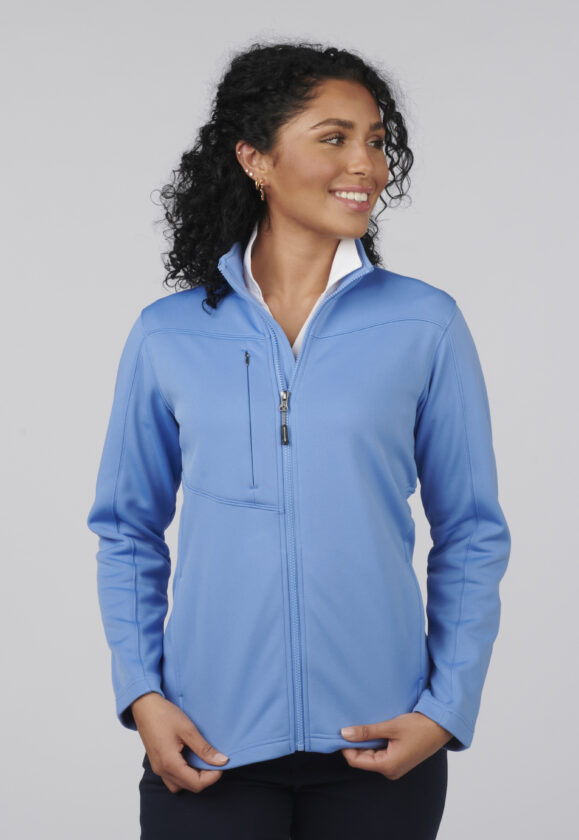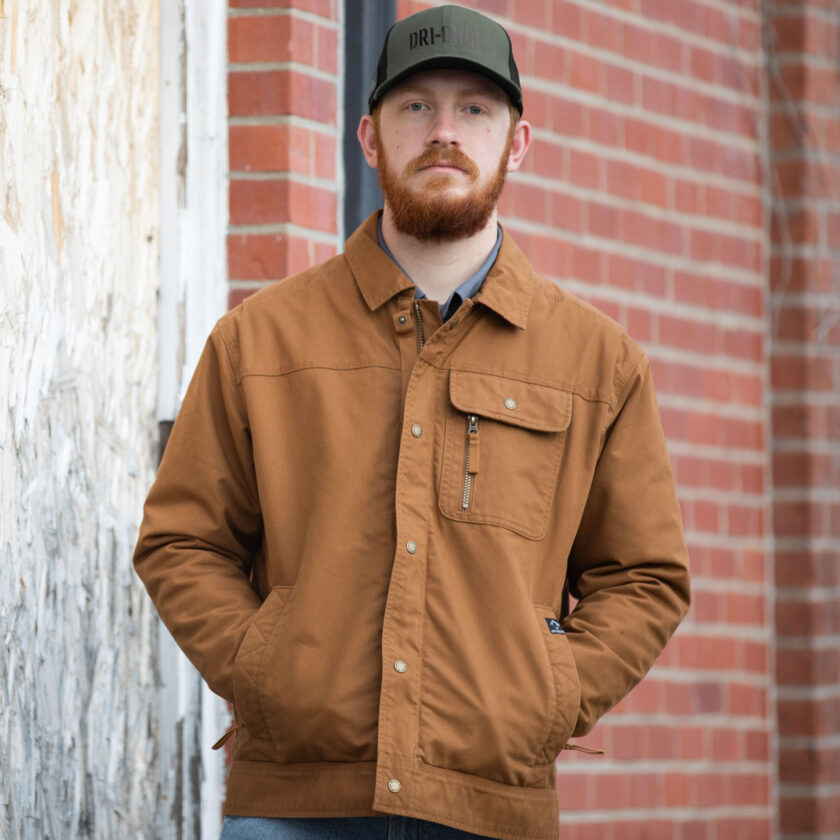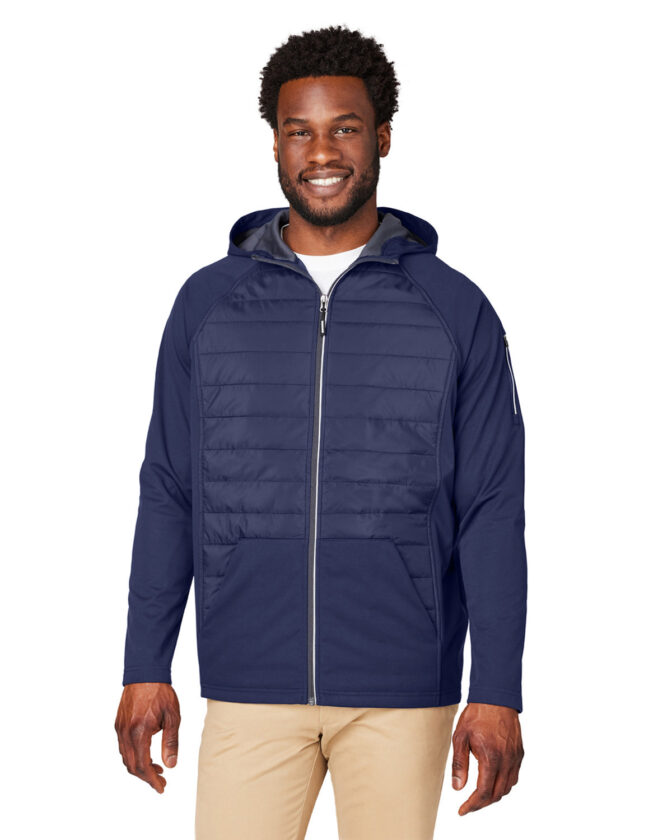Whether you’re ready to admit it or not, chillier weather is upon us.
Sure, right now we’re in that honeymoon phase where all we need is a hoodie or sweater. Still, many of us will soon have to pull out the big jackets. That means distributors should start thinking about their winter promos now. And, naturally, which outerwear should feature in those seasonal initiatives.
Whether you’re a distributor who has been in the promotional apparel world forever, or someone who’s using it as their entry point into the industry, we’ve compiled tips from leading apparel suppliers to educate you on how to best capitalize on the potential in outerwear sales this autumn and winter.
Make Wearability a Prime Focus
As with any apparel promo, wearability is the top concern. It’s imperative to give end-users something that they’ll actually want to wear throughout the winter and beyond. As longer product life cycles are desired amid increased environmental sensibility, distributors must provide end-users with something that won’t end up stuffed in the back of the closet – or worse, in a landfill.
Understand the Style Scope
Fact is, the outerwear category is extensive, featuring subcategories, different fits and various constructions – and that’s not even taking decoration capabilities into consideration. Still, it’s important for distributors to at least have a sense of the breadth of the options available.
“The outerwear category includes a range of styles from heavy winter jackets and parkas to mid-weight performance tech jackets, to lightweight coaches jackets and rain jackets,” says Bryan Kiel, director of marketing for Counselor Top 40 supplier Edwards Garment (asi/51752). “Styles that keep the wearer warm are included in this, but also styles designed to keep the wearer from exposure to the elements like rain, snow and wind.”

Stay On Top of Each Winter Season’s Trends
Going into the winter of 2024, Kiel says that mid-weight jackets and vests, ideal for layering and use into the spring, will be popular choices among end-users.
“These mid-weight styles are great because they can be used as an outdoor jacket in warmer climates, but also as a layering piece indoors in colder climates,” he says. “In our headquarters in Kalamazoo, MI, it’s not uncommon to see our Performance Tek Outerwear jackets and vests worn all four seasons – indoors and outdoors.”
Tiffany Anderson, corporate channel director for DRI Duck Traders (asi/50835), says higher-quality construction and retail-inspired features are in demand by end-users this year. “Outerwear continues to evolve into a more fashion-forward category,” she says. “The request for retail brands and styles is becoming more and more prevalent in our market. We’re seeing a lot of unique styling details like quilting and more attention to detail when it comes to closures, trims and pocketing.”
Notably, Anderson has found that customers don’t mind spending more on apparel when they know it’s of superior quality and will leave a genuinely good impression with target audiences. “People are willing to spend a little more and invest in a product that users will want to wear,” she says. “Outerwear generates the highest number of brand impressions over a product’s lifetime, so it’s a smart investment for anyone looking to promote their business.”
Know the Target Audience & Intended Use
The appeal of apparel, specifically outerwear, is that there are many uses and applications. For customer-facing end-buyers, the apparel might be a giveaway or award to entice future business. Or, the wearables could be a gift to employees or required components of uniforms.
“Outerwear is a diverse category and targets many end-user verticals, including hospitality, college bookstores, recreation, technology and education,” says Natalie Hopkins, senior director of merchandising – trade and retail brands, for Counselor Top 40 supplier alphabroder (asi/34063).
Think Like an End-User
When looking at what products your customers might like, put yourself in the end-user’s shoes and consider what sort of apparel piece you’d wear for the occasion, apparel experts advise.
If you were going on a hiking excursion, you’d probably want something that could stand up to rain. If you were running a marathon in the latter half of the year, you’d want something breathable but that still keeps you warm.
“Fleece and rain gear is great for team sports, while softshell styles will keep your more corporate-leaning sales verticals warm and comfortable while also looking polished,” Anderson says. “Meanwhile, heavy-duty canvas workwear will protect the folks out there who need gear that works just as hard as they do.”

Capitalize on the Indoor Applications of Outerwear
Another hot trend to make the most of? “Indoor outerwear,” which is essentially layering pieces that workers may wear year-round in offices and other inside settings, says Kiel. The wearable options include pullovers, quarter zips and light jackets.
For certain, these products can be uniform pieces that are great for professionals who work inside. Think about the fact that a lot of corporations are giving their employees uniform options. Rather than a one-look-fits-all choice, companies like McDonald’s have been offering workers the ability to create their own look within a branded scheme. It could be T-shirts and polo shirts, different sweaters, hats or various types of layering-friendly outerwear, all done within the brand parameters. “These pieces make sense for hotels and resorts, healthcare, automotive, retail, transportation, security and even restaurants – think the fast-food window,” Kiel says. “If you’re selling to a client in an industry, chances are that they could incorporate jackets and outerwear in their apparel.”
Keep Branding on the Subtler Side
Outerwear tends to be a larger canvas than other apparel items, so you can do more with the branding itself. However, that doesn’t mean you have to go overboard with all-over prints and giant logos printed on the back. Unless a brand’s vibe is super bold and brash, it’s generally a good rule to lean to the professional side of things in terms of embellishment, aiming for an understated look that verges on minimal. It’s usually safe to include a chest imprint or smaller imprint in other places like pockets and upper sleeves/shoulders, apparel pros say.

Get the Decoration Spot On
When it comes to decorating outerwear, direct-to-film (DTF) printing and embroidery are two of the most popular mediums.
For instance, embroidery remains the mainstay embellishment style for many traditional outerwear options, including more “rugged” workwear constructions – think Carhartt.
Still, stitching isn’t always the right way to go. “We’re seeing an increase in DTF transfers in outerwear,” Kiel says. “DTF works for a more modern look, and a style like a waterproof rain jacket could possibly be compromised by the stitching of embroidery. DTF still allows for the branding of an outerwear style but keeps the waterproof feature intact.”
Even so, it’s not impossible to embroider on more technical-fabric outerwear items with waterproofing. “If you choose to embroider on a technical item, consider how that will affect the overall performance of the technology,” Anderson says. “You might want to consider a waterproof backing on embroidery to seal the decoration and prevent leaks.”
The DRI Duck pro adds that when a client has an intricate logo or text-heavy imprint, the decorator might want to turn to heat-seal. “Be sure to work with your decorator to test on DWR fabrics first to make sure the print process of your choice adheres to the fabric properly to ensure longevity,” Anderson advises.
Indeed, longevity really is the name of the game. Jacket styles are more trend-proof than something like T-shirts or pants. Styles come and go, sure, but a good jacket will last a long time both in terms of looks and function. For an industry that relies on long-term logo visibility, that means jackets and outerwear are some of the most reliable products to turn to.



